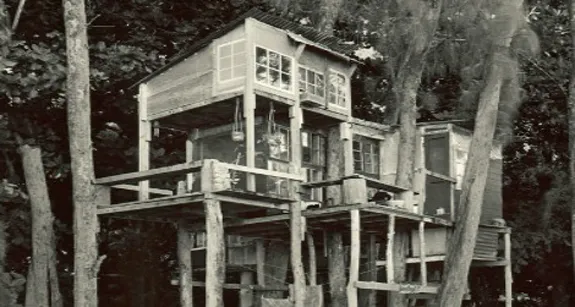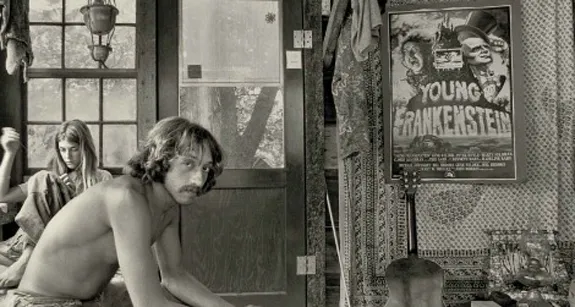Flower Children on the North Shore of Kauai
In the late 1960s, a gorgeous stretch of beach in Ha’ena State Park was the site of a hippy haven called Taylor Camp
/https://tf-cmsv2-smithsonianmag-media.s3.amazonaws.com/filer/20120709084047Makana-Mountain-tmb1.jpg)
You have to drive the north coast of Kauai—Hawaii’s Garden Island—past Kilaueu Falls, the condominium metropolis of Princeville and funky old Hanalei to find Taylor Camp. Once you get to Ha’ena State Park, where the Na Pali Cliffs guard the island’s impregnable west coast, park the car and thrash through the jungle to Limahuli Stream, which debouches from the mountains on a gorgeous beach.
A band of young people came to the same place in 1969, most of them refugees from strife-ridden college campuses and Vietnam War protests. They drifted in from all over the mainland, looking to turn down the volume at the end of the blaring 1960s and pitched tents in a North Shore park, playing beach volleyball in the buff and smoking marijuana, activities that ultimately got them evicted.
Enter Howard Taylor, brother of movie star Elizabeth, who bailed them out of jail and invited them to settle on a beachfront property he owned that had just been condemned by the state. His kindness was also an act of revenge because the state would have to deal with the squatters before they could turn the place into a public park. “It’s your land and they’re now your hippies,” he told officials. After joining the campers for Christmas dinner in 1972 with his celebrated sister, Taylor left them to their own devices.
For the next five years the hippie haven that came to be called Taylor Camp aggravated locals, who had no idea how to cope with their first exposure to the mainland counterculture. At the time, the pineapple and sugar cane industries were faltering and Kauai was enveloped in a sweet dream state, its population dwindling, its beaches still the domain of local surfers.
Semi-permanent treehouses made of scavenged wood and plastic replaced tents at Taylor Camp; a garden was planted, shaped like a mandala; residents started a co-op, built communal toilets, showers and the Church of the Brotherhood of the Paradise Children, where discussion ranged from Kierkegaard to the Tantras; couples swapped partners, babies were born, wild parties and homegrown pot attracted newcomers.

The story is told in a documentary film, Taylor Camp: Living the ’60s Dream, produced by John Wehrheim, who lived nearby in the early 1970s. The lavishly illustrated, accompanying book describes the seven-acre encampment, inhabited by about 100 people in its heyday as something different from a commune. “It had no guru…no written ordinances. It wasn’t a democracy. A spirit that brought forth order without rules guided the community,” Wehrheim wrote in the introduction.

The film is an even more vivid evocation, thanks to interviews of people who lived there, now aging baby boomers with jobs and families who seem no worse for the experience. In fact, most look back on their Taylor Camp days as the best time of their lives, though a seamier undercurrent can be felt in descriptions of the community’s post-halcyon years when hard drugs and rowdy transients arrived.
Many of the mellow, early settlers moved on, though it took the state until 1977 to close the camp down. By then the ’60s were over and Kauai was on the verge of a real estate boom that brought developments like Princeville.
For people who recall flower children with nostalgic fondness, Wehrheim’s book and film are all that remain to tell the story of a serendipitous time and place where a footnote to the history of the 1960s was written. Of course, it would be even better to go back to the North Shore of Kauai, to follow Limahuli Stream to the beach and to lie in the sand, remembering the way we were.
Planning Your Next Trip?
Explore great travel deals
Smithsonian magazine participates in affiliate link advertising programs. If you purchase an item through these links, we receive a commission.
/https://tf-cmsv2-smithsonianmag-media.s3.amazonaws.com/accounts/headshot/Spano.jpg)
/https://tf-cmsv2-smithsonianmag-media.s3.amazonaws.com/accounts/headshot/Spano.jpg)